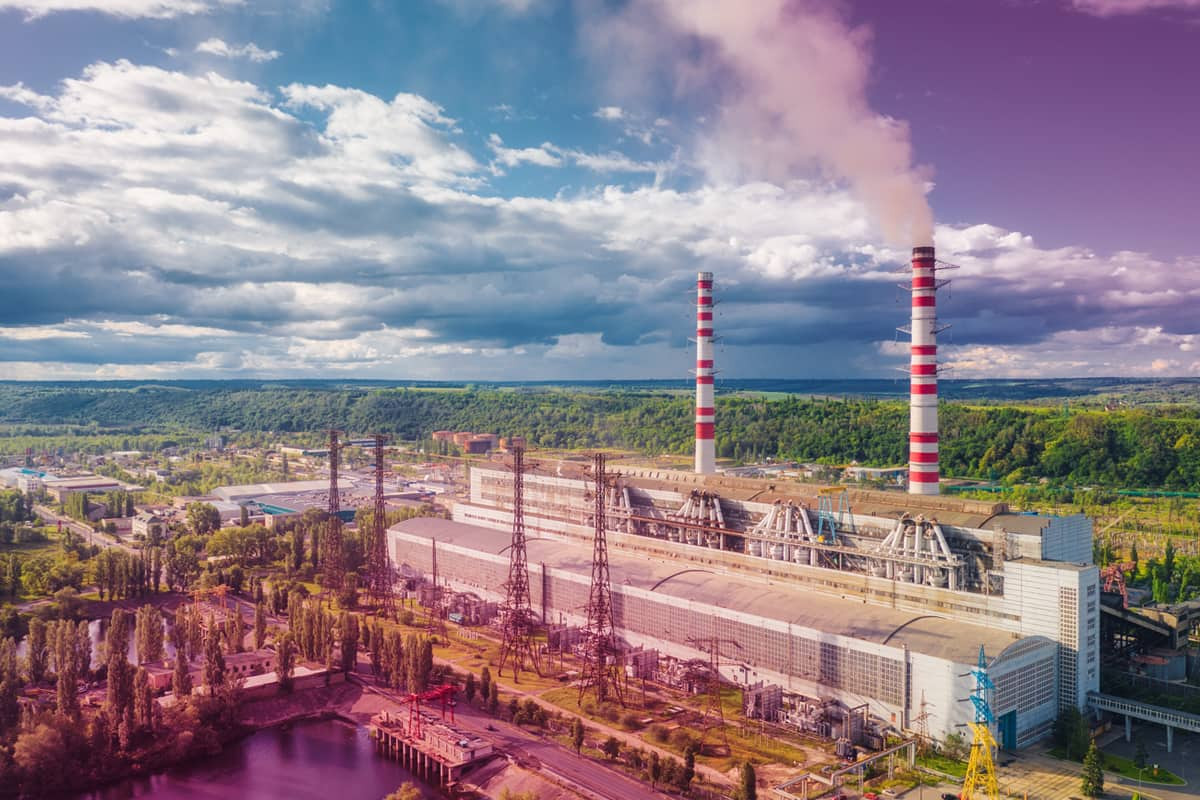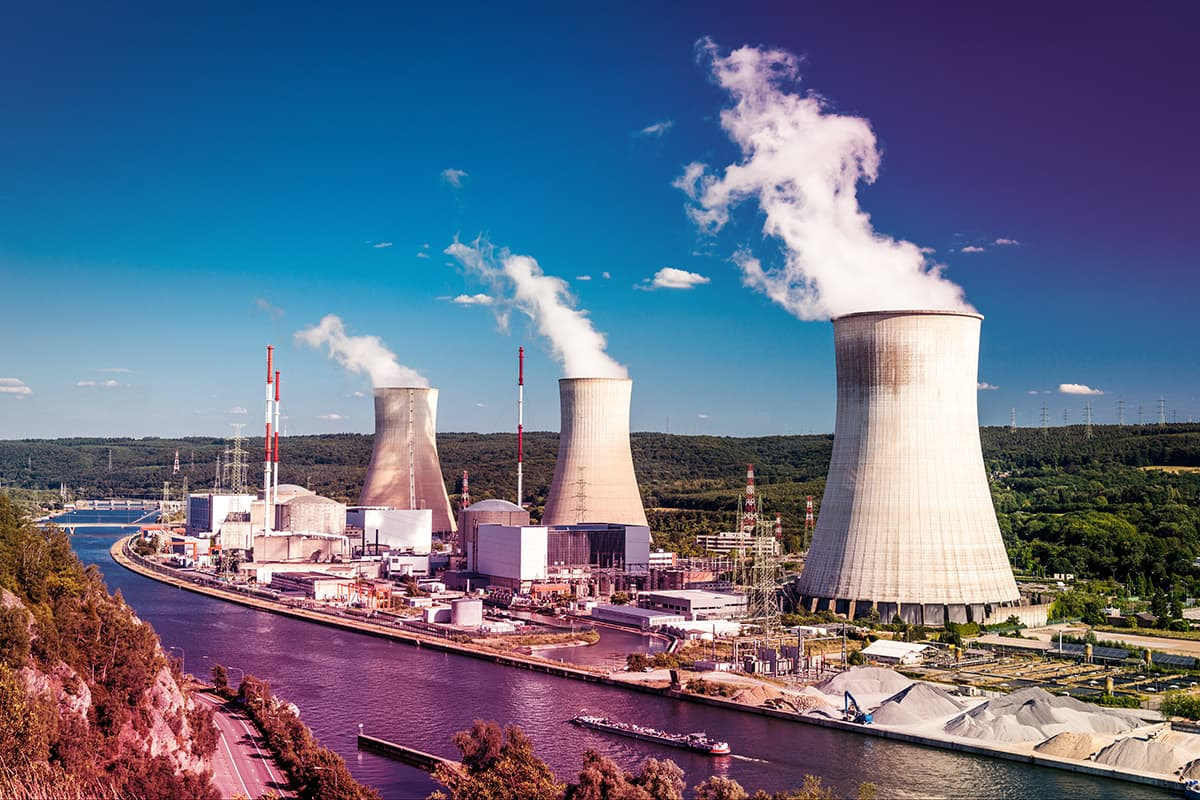
What is in this article?
Today, non-renewable energy sources are mostly used to meet energy needs. However, it is estimated that resources with limited reserves, such as fossil fuels, will be exhausted due to their wide range of use.
In addition to its advantages such as being readily available in nature and processing at low costs, these resources have serious damages to the environment during processing and use. Examples of these harms are climate changes and global warming.
You can find the advantages and disadvantages of non-renewable energy sources, statistical data on the usage rates of these resources in Turkey and in the world in our blog post.
What is Non-Renewable Energy?
Considering the stages of formation, non-renewable energy refers to energy sources that do not re-form in a short time or are not replaced when exhausted. In this sense, it is also called exhaustible energy.
What are Non-Renewable Energy Sources?
Non-renewable energy sources are divided into two, fossil resources and nuclear origin resources:
-
Energy Production with Fossil Fuels
 Fossil fuels are formed when dead animal and plant residues from geological periods remain under stone, mud or soil for millions of years and do not come into contact with air. These energy sources that turn into fuel include natural gas, oil and coal.
Fossil fuels are formed when dead animal and plant residues from geological periods remain under stone, mud or soil for millions of years and do not come into contact with air. These energy sources that turn into fuel include natural gas, oil and coal.
Due to the fact that its formation takes too long and the area of use is very wide, it is foreseen that these fuels may run out and are therefore cited as non-renewable energy sources.
80% of the resources used for energy production in the world consist of fossil fuels. Today, in addition to heating, it is also used for electricity generation in thermal power plants.
Petroleum, which consists of hydrogen and carbon elements, also contains small amounts of oxygen, nitrogen and sulfur. It usually occurs on sedimentary plots. Crude oil can be used as natural gas in liquid form and as candle and asphalt in solid form.
It is an efficient resource as it meets approximately 70% of the world's energy needs. Since it has the feature of being a vehicle fuel, it is used in diesel and gasoline engines, land vehicles, ships and airplanes. It can also be used for heating purposes in homes and workplaces.
 Natural gas, which is a flammable and colorless gas, is dissolved in oil. Usually when used as fuel, refining is not required.
Natural gas, which is a flammable and colorless gas, is dissolved in oil. Usually when used as fuel, refining is not required.
It can be used without any processing, as it is extracted from the source. For this, natural gas must be compressed and liquefied, or transported by pipes. It is used as a raw material for the petrochemical industry.
It is used intensively in heating and cooling systems to meet the hot water needs in homes. Apart from this, it can be used in many areas such as iron and steel industry, ceramic sector and glass manufacturing.
Coal, an organic rock consists of the elements hydrogen, oxygen and carbon. Coal deposits can be located meters below the ground or on the surface. It is used for heating and electricity generation.
Coal burned for electricity generation reacts with oxygen in the air. It is then converted into thermal energy and released as heat. Water heated by coal turns into steam and spins turbines. Thus, both heat and electricity are generated.
There are four types of coal. These are anthracite, bituminous, sub-bituminous and lignite. Anthracite, also known as hard coal, contains a low percentage of volatile matter and a high percentage of constant carbon. It is extremely hard and has a black color.
Bituminous coal is mainly used in electricity generation and steelmaking, as it has a high heating value.
Sub-bituminous coal, which has a matte appearance, is used in electricity production with its low-medium thermal value.
Lignite coal is the type of coal with the least carbon concentration. Despite its high moisture content, it has a low thermal value.

-
Nuclear Power Generation
In the production of energy with nuclear power, uranium, thorium and plutonium elements are used as raw materials.
These radioactive elements are broken down into atoms by special methods and the resulting energy is evaluated in electricity production. Today, nuclear power plants that meet 17% of electricity needs are more than 400 worldwide.

Features of Non-Renewable Energy Sources
- Apart from nuclear energy, its reserves are quite small.
- The formation of non-renewable energy sources takes much longer than their consumption.
- It is predicted that fossil fuel reserves will be depleted between 50 and 250 years.
- Its extraction and processing are relatively inexpensive.
- It meets a large part of the world's energy needs.
Renewable Energy and Non-Renewables: Differences
- Renewable energy refers to energy sources that exist continuously and have the property of self-renewal.These sources include mainly hydroelectric power, solar power, wind power, biomass energy and geothermal energy. Non-renewable energy sources include fossil fuels such as coal and oil.
- The biggest difference of renewable energy sources from non-renewable energy sources is that they are inexhaustible resources. Non-renewable energy sources are depleted over time.
- The use of renewable energy sources minimizes carbon emissions in meeting energy needs. Non-renewable energy sources, on the other hand, have a relatively higher carbon footprint and carbon emissions.
- The cost of renewable energy is high. Generating electricity with these resources is more costly than generating electricity using fossil fuels. Non-renewable energy has a relatively lower cost.
- The infrastructure required for the use of renewable energy sources is expensive and not easily accessible to most countries. In most countries, there is affordable and accessible infrastructure for non-renewable energy.
In particular, the use of wind and solar power requires a large area of land or sea. For non-renewable energy sources, a relatively small area is needed.
Advantages of Non-renewable Energy
The most important advantage of non-renewable energy sources is that they are ready for use and processing in nature. These resources can be extracted at low costs and used in the production of electrical energy.
The cost of electricity generated from non-renewable sources such as coal and natural gas is relatively low. It stands out with its high reserves compared to coal, natural gas and oil.
Oil, on the other hand, is put to use in the fields of transportation and different industries. Natural gas, a relatively low-cost resource, is less damaging to the environment than oil and coal.
The advantages of nuclear energy are the absence of carbon dioxide and greenhouse gas emissions during its use. The reserve of raw materials used in production is quite large. It can be used efficiently in the production of electrical energy. With a small amount of radioactive raw materials used, quite a lot of energy can be released.
Disadvantages of Non-renewable Energy
Fossil fuels, which are among the non-renewable energy sources, are used prevalently. Therefore, it is inevitable that these resources will harm the environment. As a result of effects such as acid rain, high carbon footprint, air pollution, damage and reduction of natural resources can be counted among the disadvantages.
Businesses that turn to renewable energy sources in order to reduce carbon emissions and be environmentally conscious can obtain a national certificate to certify their green electricity production in the last two years.
 Coal causes air pollution when burned. This is due to the fact that large amounts of carbon dioxide and greenhouse gases are emitted during the process. In addition, the acquisition of coal is life-threatening for those working in the mines.
Coal causes air pollution when burned. This is due to the fact that large amounts of carbon dioxide and greenhouse gases are emitted during the process. In addition, the acquisition of coal is life-threatening for those working in the mines.
Respiratory diseases are common in miners who breathe harmful dust from mines. Due to the accumulation of coal dust in the lungs, many miners can develop occupational diseases such as bronchitis or lung cancer. Apart from this, there is always a risk of explosion and collapse in coal mines. Hundreds of miners have lost their lives due to mining accidents in our country and in the world.
Oil, which emits greenhouse gases and carbon dioxide, such as hard coal and lignite coal, damages the environment when burned. It is found only in limited areas around the world and its reserves are also limited.
The top 5 countries with the most of these reserves are the United States, China, India, Russia and Australia. Natural gas, whose reserve is quite limited, creates a disadvantage by emitting emissions and causing environmental pollution. In addition, the high transmission and transportation costs are one of the disadvantages. Natural gas resources are expected to be depleted within an average of 70 years.
With nuclear energy, especially radioactive wastes such as fuels used in reactors and uranium wastes are a serious threat to human health. The economic disadvantages of nuclear reactors are that the cost of operation and emergency safety measures is very high.
Although the risk of accidents is quite low, the use of this resource is not completely risk-free. An accident that occurs in nuclear power plants can emit dangerous levels of radiation in a particular area.
Radioactive materials in the smoke coming from a power plant have negative effects on the people, buildings, food, water and animals outside. With humans, it can cause long-term health problems such as cancer.
Non-renewable Energy Usage Rates in Turkey
Non-renewable energy sources used for energy production in Turkey include lignite, natural gas, oil, mining coal and asphaltite. But among them, lignite coal is the one with the highest reserves, whereas other resources have limited reserves.
Coal, which stands out among the fossil energy sources, is used for heating in most regions of Turkey. Apart from this, iron and steel industry and thermal power plants also use it. The most important coal reserves are in Zonguldak.
Between January 2020 and January 2022, lignite coal production was 6,661,693 metric tons, while hard coal production was 101,632 metric tons. Turkey has a 3.4% share in the world's sub-bituminous coal and lignite reserves.
Sub-bituminous coal, also known as black lignite, is an intermediate form between low-quality lignite and high-quality bituminous coal. Therefore, its form varies from hard to soft. Geologically it is among young coals.
It is used in the production of steam for the production of electricity and is therefore often put to use in power plants. In addition, sub-bituminous coal can be liquefied and converted into oil and gas.
While oil production in Turkey was 2.36 million metric tons in 2011, it was 2.98 million metric tons in 2019. Oil exploration activities continue in order to benefit from energy resources and to reduce foreign dependency. Countries from which crude oil is imported include Russia, Nigeria, Saudi Arabia, Libya and Iraq.
In 2019, 483 million m³ of natural gas was produced in Turkey, while 45.21 billion m³ of natural gas was imported. Natural gas, which is used for heating purposes in homes and industrial areas, is also used in electricity production.
Non-Renewable Energy Usage Rates in the World
According to 2019 data, oil reserves worldwide are 1.733.9 billion barrels. Of these, 48% of the reserves are found in Middle Eastern countries, 19% in Central and South America, 14% in North America, 8% in the Commonwealth of Independent States, 7% in Africa, 3% in Asia Pacific and 1% in Europe. In the same year, world oil production was announced as 95.2 million barrels / day.
As of the beginning of 2020, natural gas reserves worldwide were announced as 198.8 trillion m³. Among the countries with high reserves are Russia, the United States, Iran, Turkmenistan and Qatar, while the United States stands out in natural gas production.
Coal has become the world's primary source of energy after oil by the beginning of 2021. It ranks first in electricity production with a rate of 35.9%. By the end of 2020, the world's reserves of bituminous, anthracite coal (hard coal), lignite coal and sub-bituminous coal totaled 1.07 trillion metric tons.
Approximately 70% of them are hard coal. With a share of 29.1%, the United States has the most hard coal reserves in the world, while Russia has the most lignite coal and sub-bituminous coal reserves in the world with a share of 28.2%.
Which energy source do you think is most suitable for Turkey? We are waiting for your comments. You can share our article with people you think will be interested so that information about energy sources can reach everyone.

 Online Services
Online Services Application Inquiry
Application Inquiry Pay Assurance Fee
Pay Assurance Fee Query Installation Number
Query Installation Number Compensation Fee Inquiry
Compensation Fee Inquiry Automatic Payment Order Inquiry
Automatic Payment Order Inquiry Partnership
Partnership






Leave a Comment
Comments (5)
M
Mila
Hiç iyi değil
G
Gülistan
Türkiye için güneş enerjisi ve rüzgar enerjisinden faydalanmanın oldukça avantajlı olacağını düşünüyorum.
E
Emik
İyi değil hiç
Y
Yılmaz Koç
İdare eder
E
Elif
Çok güzel olmuş